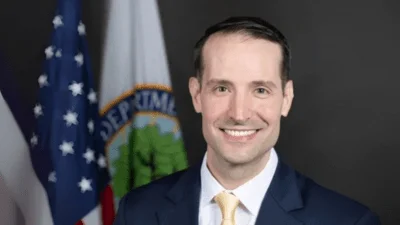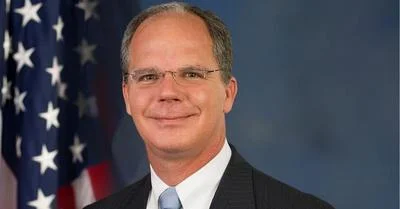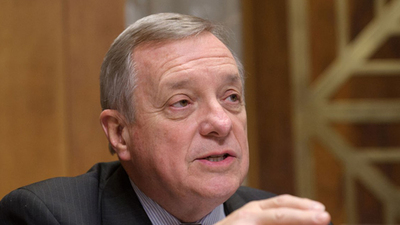The Diamond Alkali Superfund Site, located near New Jersey's Passaic River, is one of the longest existing extensively contaminated sites listed on the U.S. Environmental Protection Agency’s (EPA) National Priority List of polluted locations in need of remediation. Although the EPA estimated that cleaning up the site will cost $1.8 billion, it recently came to an agreement for 85 polluters to pay for $150 million worth of cleanup costs, raising the question of who will pay for the rest. Assemblywoman Beth Sawyer, who represents the state's 3rd District, said she is concerned that the proposed settlement agreement will not hold the appropriate parties responsible and will put the costs for the cleanup onto New Jersey residents, while also setting a precedent to do the same thing in the future.
"That is definitely a concern that I have and, frankly, every resident of New Jersey should have. Someone is going to have to pay for this cleanup," Sawyer said in a statement. "The EPA’s settlement agreement lets polluters off the hook for pennies on the dollar, leaving a huge hole in the cleanup costs that are supposed to be covered by the polluters. Those costs are going to fall onto someone else. Unfortunately, that likely means the municipalities and their residents will end up having to foot a large part of the bill."
The Diamond Alkali Superfund Site includes the former manufacturing facility at 80-120 Lister Ave. in Newark, New Jersey, which is by the Lower Passaic River Study Area and the Newark Bay Study Area, according to the EPA. Throughout the 1940s, Kolker Chemical Works, Inc. produced Dichloro-diphenyl-trichloreothane (DDT) among other chemicals. Diamond Alkali Company owned and operated the facility in the 1950s and 60s, later to be bought by Occidental Chemical Corporation (OCC). OCC has assumed the primary responsible party role in negotiating the study and cleanup of the site since the mid-1980s.
The Diamond Alkali Superfund Site was projected to cost at least $1.8 billion to clean up, making it the most expensive remediation in the history of the superfund program, the New Jersey Monitor reported. EPA Region 2 Acting Administrator Walter Mugdan said in 2021, "We expect 100% of the costs to come from the polluters."
In December, the EPA and U.S. Department of Justice (DOJ) announced a proposed consent decree, which would require 85 potentially responsible parties to pay a total of $150 million toward the cleanup of the Diamond Alkali Superfund Site, according to a release.
“Newark, Harrison and many other vibrant communities have borne the brunt of pollution along the Lower Passaic River for too long,” said First Assistant U.S. Attorney Vikas Khanna for the District of New Jersey. “This agreement is an important step forward. It will support significant cleanup efforts that restore this historic waterway, advance a new chapter of responsible land use and return the river to the people of New Jersey."
The release noted that the EPA also reached several related agreements, including one through which the OCC would be in charge of designing the cleanup of the lower 8.3 miles of the site.
"The EPA’s settlement left a huge gap between the total cleanup costs and the costs polluters have agreed to pay. That gap will have to be paid by others – and will likely fall onto the taxpayers of the municipalities whose river was polluted or to residents of the State of New Jersey," Sawyer said. "As bad as this particular settlement is, it could set a precedent for future Superfund sites in New Jersey. Our state has more Superfund sites than any other. Are New Jersey taxpayers going to have to foot the bill for all of those cleanups? This could leave residents and ratepayers in the state on the hook for hundreds of millions or billions in cleanup costs for projects all over the Garden State."
"I am concerned and confused by EPA’s approach. The fact they are settling for pennies on the dollar, and then taking almost half of the settlement for their 'oversight' costs is mind-boggling. How is that in the best interests of the residents of New Jersey when it appears obvious there are only two outcomes: Every resident in the state is going to be taxed for a $2 billion cleanup, or it will never be cleaned up?"
New Jersey has the most hazardous waste sites out of any state in the U.S., with 115 sites as of October 2022, followed by California, which has 96, and Pennsylvania, which has 90, according to Statista.
"New Jersey has the largest number of so-called Superfund sites, a fancy word for contamination," Sawyer said. "There are nine sites in the 3rd Legislative District. EPA’s actions could set a precedent for responsible parties to engage in this 'let them off the hook easy' process, which will be devastating for my district and the entire Garden State. You have to wonder why Biden’s EPA is doing this to New Jersey. Maybe he’s afraid Gov. Murphy wants his job."









